Invite Monarch butterflies into your garden
The annual migration cycle of the Monarch butterfly has been described as the most spectacular in the insect world. It has been called an “endangered natural phenomenon.” This species and its migration are dependent upon conservation and replenishment of their habitats and refraining from using pesticides and herbicides in all three North American countries: Canada, the United States, and Mexico. Climate change is another factor threatening Monarchs – reducing our carbon footprint is critical to helping Monarchs, and all living things, survive.
About Monarch butterflies
In the spring of each year monarch butterflies travel from México to the northern United States and Canada. Millions of butterflies have spent the winter clustered in the humid pine-oak forests of the Sierra Madre Mountains on the border of Michoacán and Mexico State.
Once the days lengthen and the air warms, they begin their migration north. During their journey they are pollinating flowers, herbs and vegetables along the way. Breezes and thermal winds help them on their flight.
As soon as they find milkweed, females begin laying their eggs. Several generations later, the monarchs have arrived back in their northern habitats where they spend the spring and summer. In the fall the last generation of butterflies returns to México, and the cycle begins again.
Life Stages of a Monarch Butterfly
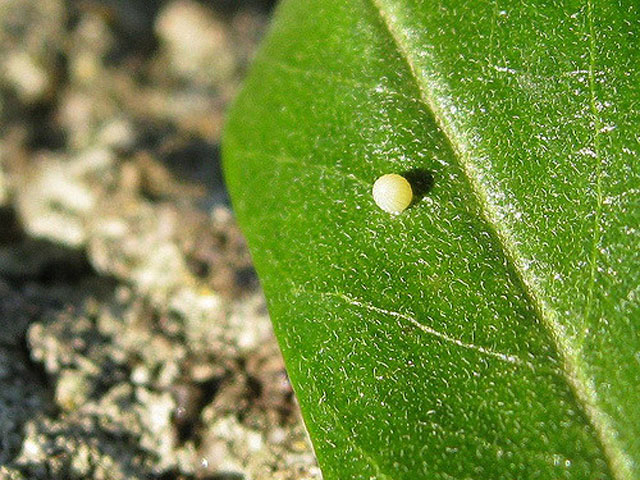
Eggs on Milkweed Leaf

Chrysalis Stage
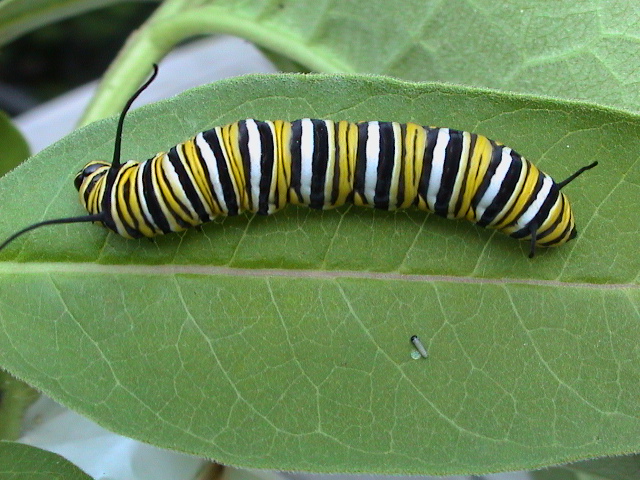
Caterpillar on Milkweed Plant
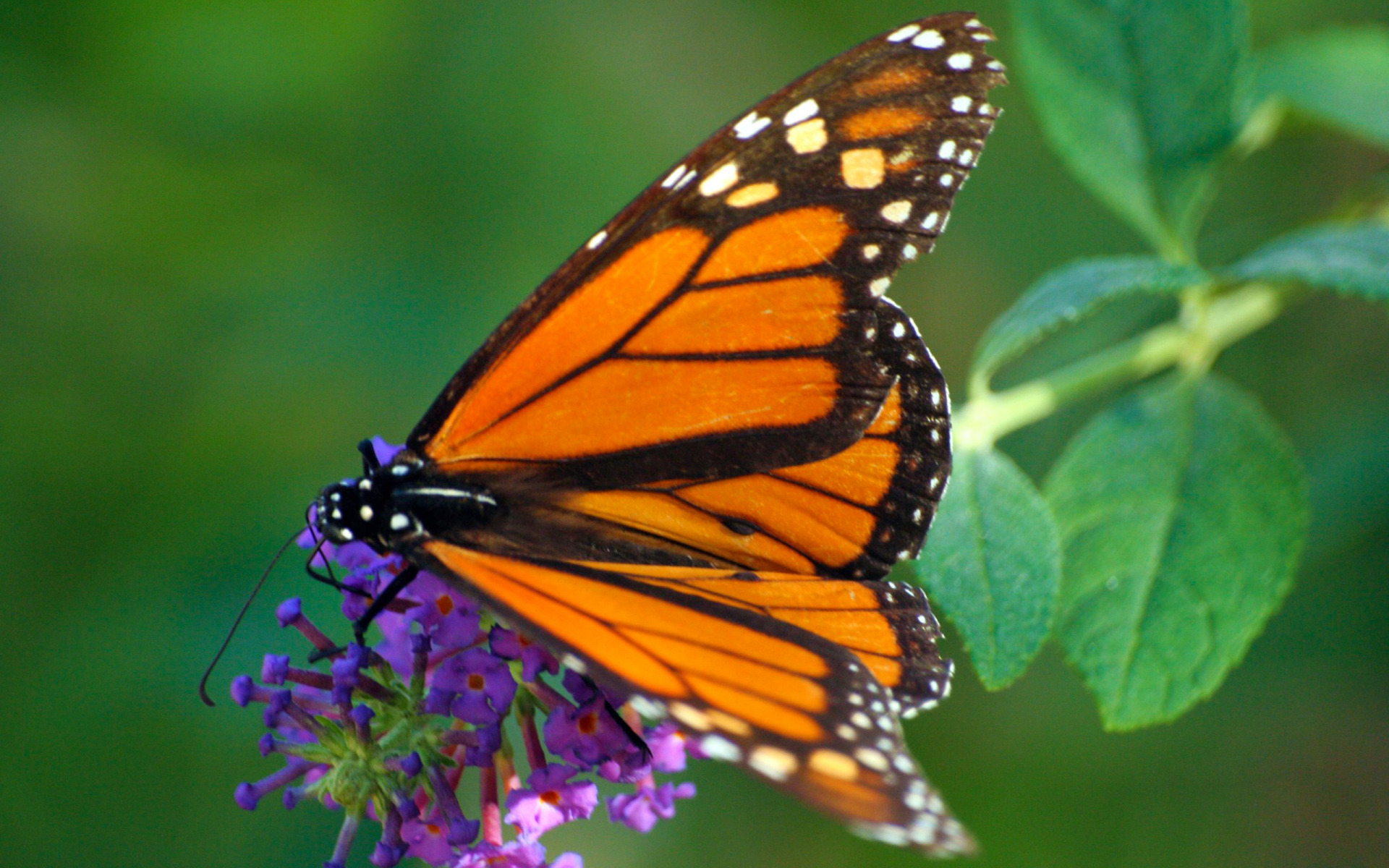
Adult Monarch
“Butterflies… flowers that fly and all but sing.”
– Robert Frost
Migration Map
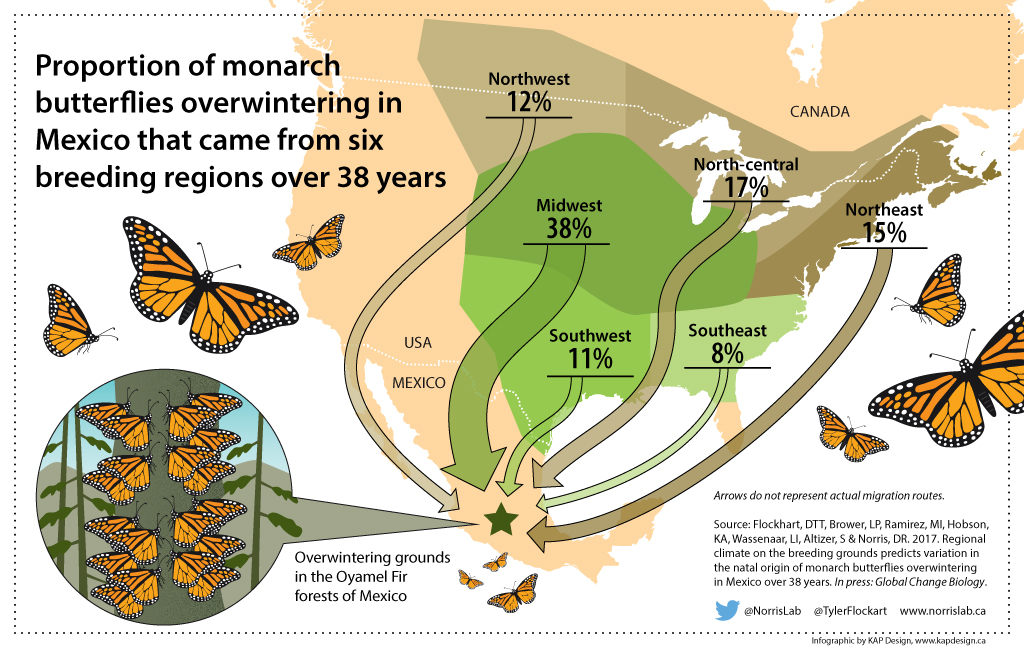
Milkweed, it's essential
Monarch butterflies depend upon milkweed for creating a new generation. The Monarchs only lay their eggs on the milkweed plant, because during the caterpillar stage they feed exclusively on all its parts which contain toxins that are poisonous to its predators. The toxins remain in their system even after metamorphosis, thereby making adult monarchs poisonous also.
Wild milkweed sources have alarmingly diminished due to agricultural use of herbicides. This practice is threatening the survival of this beautiful and important pollinator.
Create a Monarch Waystation
“Waystations” are places that provide nectar, host plants for caterpillars and shelter for Monarch butterflies as they migrate between their northern and southern habitats.
To create a waystation you need a sunny site, plants providing year-around blooms, Milkweed and close spacing between plants to create shelter and refrain from pesticide use (see our page on Nature-friendly Pest Control).
Check our list of plants for nectar-producing plants for butterflies.
Franke’s Vivero can provide you with most, if not all, the plants you need, including Milkweed.
A Word About Milkweed
If you want to plant milkweed in your garden, it’s critical to plant the variety that is native to your location. This is a good article that spells out at least part of the problem with planting non-native milkweed in the United States. Science
In San Miguel, our native milkweed (pictured below) is the colorful Ascelpias curassavica. Depending upon availability you can purchase this native variety of milkweed at Franke’s Vivero or Bodega Organica at Mercado Sano.
If you would like seeds, contact us at audubondemexico@gmail.com.
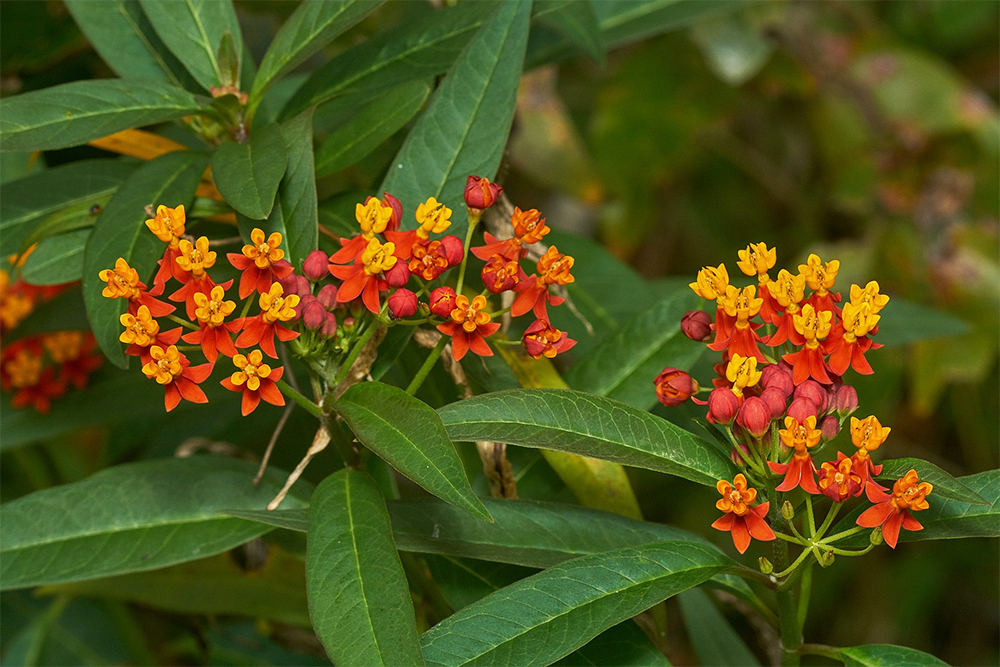
Create a Puddle for butterflies
Perhaps you’ve seen butterflies gathered around a damp spot on a dirt path or beside a stream? Those butterflies aren’t thirsty. They are puddling. Butterflies “puddle” when they are in search of minerals, especially salt. Sometimes they puddle when nectar food sources are not plentiful.
Place sand and a few flat rocks in a shallow dish, set in a sunny area of your garden and keep moist with water. Overripe fruit can also be placed in the puddle to offer another source of nectar. They are particularly fond of sliced rotting oranges, grapefruit, strawberries, peaches, nectarines, apples and bananas (you don’t have to have a puddle to set out fruits, just make sure it’s really ripe so it is at its ultimate sweetness.)
Subscribe to our newsletter
Our monthly newsletter will keep you up to date on our scheduled events, our work, and features monthly nature-related articles.
